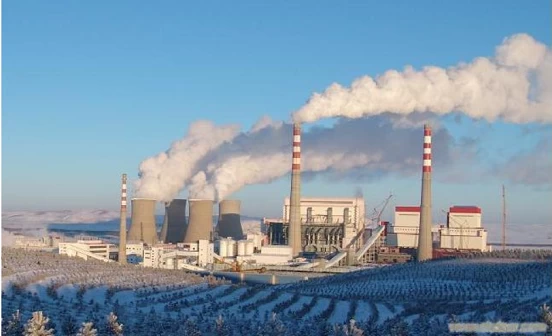Boiler Terminology Explanation (Part 12)
Boiler Terminology Explanation (Part 12)
111、Creep Rupture
Creep rupture refers to the failure of metallic materials due to creep damage under prolonged exposure to high temperatures and low loads. It is one of the primary failure modes of high-temperature components in thermal power plants. For example, prolonged overheating operation can lead to leakage and rupture in main steam pipes, high-temperature superheater tubes, and high-temperature reheater tubes. The creep rupture performance of metals is characterized by their long-term strength limit and long-term plasticity. In the high-temperature valve industry, manufacturers must ensure materials withstand such extreme conditions. Among them, China high temperature gate valve manufacture has been making advancements in producing durable and heat-resistant gate valves.
112、Stress Relaxation
Stress relaxation refers to the phenomenon in which, under high temperature and stress conditions, the total deformation remains constant while elastic deformation gradually converts into plastic deformation over time, thereby causing a continuous reduction in stress.
113、Elastic Modulus
The elastic modulus is the ratio of stress to the corresponding normal strain within the elastic deformation range of a material. It primarily depends on the material’s composition and crystal structure.
114、Yield Phenomenon
During a tensile test, the yield phenomenon occurs when the specimen continues to deform without an increase in the applied force.
115、Yield Strength
Yield strength characterizes a metallic material’s resistance to initial plastic deformation. It is expressed as the stress at which the material exhibits yielding during a tensile test and is also known as the yield point.
116、Coal
Coal is a carbon-rich solid fossil fuel and an important primary energy source. China is one of the earliest countries in the world to mine and use coal. Historical records show that over 1,500 years ago, China began using coal for iron smelting. By the early 13th century, coal usage had become widespread in China, whereas in Europe, coal was not widely utilized until after the Industrial Revolution in the 18th century. Today, coal remains a crucial source of power and chemical raw materials worldwide. Currently, it is primarily used as a direct combustion fuel for energy production.
117、Chemical Composition of Coal
The main chemical elements in coal’s organic matter include carbon, hydrogen, oxygen, nitrogen, and sulfur. The content of these elements is essential for calculating combustion air requirements, combustion products, and the calorific value of coal. It also indicates the coal’s combustion reactivity.
118、Industrial Analysis of Coal
The industrial analysis of coal includes the determination of moisture, volatile matter, fixed carbon, and ash content, sometimes also including sulfur content and calorific value.
(1) Moisture: Moisture in coal exists in two forms—free water, which is physically attached, and crystallized water, which is chemically bound. Industrial analysis measures only free moisture, which is categorized into total moisture (also known as received basis moisture) and air-dried basis moisture (also known as inherent moisture).
(2) Volatile Matter: The quantity of products released when coal undergoes pyrolysis under specific conditions.
(3) Ash Content: The residual substance remaining after the complete combustion of combustible materials and after complex decomposition and combination reactions of minerals at a specific temperature.
(4) Fixed Carbon: The fraction of coal remaining after removing moisture, ash, and volatile matter. It is calculated as 100% minus the sum of moisture, ash, and volatile matter.
(5) Sulfur Content: Sulfur in coal exists in two forms—combustible sulfur and fixed sulfur. The former includes organic sulfur and most inorganic sulfur (mineral sulfur), while the latter refers to sulfate sulfur in minerals, which is non-combustible and remains in the ash.
(6) Calorific Value: The amount of heat released when a unit weight of coal is completely burned. If the heat released includes the latent heat of water vapor condensation in the flue gas, it is called the gross calorific value (higher heating value). Otherwise, it is called the net calorific value (lower heating value). Calorific value is one of the most critical indicators of coal quality and is measured using a calorimeter.
119、Elemental Analysis
Elemental analysis determines the primary elements in coal’s organic matter, including carbon, hydrogen, oxygen, nitrogen, and combustible sulfur, expressed as a mass percentage. Together with moisture and ash content, the total should sum to 100%.
(1) Carbon: The most abundant element, accounting for more than 90% of the combustible components.
(2) Hydrogen: The second most important element, measured along with carbon. The coal sample is burned in oxygen, and the resulting CO₂ and H₂O are absorbed by reagents to determine the carbon and hydrogen content based on weight gain.
(3) Nitrogen: Measured by adding a mixed catalyst and sulfuric acid to the sample and heating it to decompose the nitrogen in the coal into ammonia, which is then quantified.
(4) Oxygen: Direct measurement is complex and less precise, so it is typically calculated by subtraction, i.e., 100% minus the sum of carbon, hydrogen, nitrogen, combustible sulfur, moisture, and ash content.
(5) Combustible Sulfur: Estimated by subtracting fixed sulfur from total sulfur. When calculating oxygen content, total sulfur is often used as an approximation for combustible sulfur.
120、Basis of Coal Composition Analysis
The moisture and ash content in coal can vary due to mining, transportation, storage, and climatic conditions, which also affect the content of other components. To standardize coal analysis for production and research purposes, four analytical bases are commonly used:
(1) As-Received Basis: Represents the coal in its received state.
(2) Air-Dried Basis: Represents the coal in an air-dried state.
(3) Dry Basis: Represents the coal in a completely dry state.
(4) Dry Ash-Free Basis: Represents the coal in a hypothetical dry and ash-free state.

 +86 512 68781993
+86 512 68781993 


















